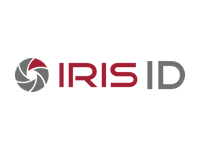In recent years there has been a gradual shift towards remote working. With the availability of fast internet and mobile phone data, what was possible for few became possible for many. Businesses across different sector and jobs could work from anywhere in the world with an internet connection. This trend has very suddenly and dramatically accelerated with the emergence of the Pandemic. It forced many businesses into remote working. While some struggled to get to grips with the technology, many companies fully embraced the change. It allowed them to see how well it can work for many and perhaps that it would open up the potential for a more diverse workforce that was not location determined. Bosses could finally let go of the fear that their staff would not be productive. By allowed to work from home and could see the increased flexibility it allowed their employees combined with saving on commuting time actually made them more productive. They were able to achieve better results for the business.
What apps/software make remote working possible?
VPN
A Virtual Private Network (VPN) is a method of creating a Private network using a public internet connection. It creates a secure connection to allow for sensitive data to be shared between employees without compromising on confidentiality. A VPN connection will allow people to remotely access their computer/data in the office from remote locations without having to transfer information to a second device so maintaining data security.
Thre are many services available although the free services potentially keep logs of sessions and collect some information which can be sold to third parties, so it’s advisable to choose a paid service that has a no-log policy, of which there are several. Depending on the individual business requirements which VPN provider will be ideal, Some of the top-rated include;
NordVPN, IPvanish, ExpressVPN, TunnelBear.
Video conferencing
Video conferencing makes having meetings remotely a vastly different experience to telephone calls. It gives organisations the capability to give presentations, have negotiations where facial expression and body language is heavily relied upon possible. At the same time, it allows companies to save money on travel and related costs. The advances in technology have also meant that video conferencing has become much more affordable and accessible to all organisations, as no specialist equipment is required. Examples of popular video conferencing software include Zoom meetings, Microsoft teams and GoToMeeting.
Shared cloud drives
Often files being shred between colleagues, especially those with images, cannot be sent by email due to the file size restrictions. This is solved by using shared cloud-based storage. Files can be uploaded and viewed as well as downloaded. With the added benefit that files are more secure and not reliant on the device being used to access it, it is available at all times. The best known such services are Google Drive, One Drive, Dropbox and Sharepoint.
Project management apps
Project management Apps/Software that can make project planning and implementation for teams working remotely more integrated and flowing experience. Organisations will benefit from being able to schedule tasks, manage resources and indicate project milestones. To have all communications related to the project with the same platform will ensure key people don’t get left out of conversations. There are many such software/apps with varying features available and meeting needs of different size organisations, examples of some of the most popular include; Asana, Trello and Monday.
Shared calendars
Using shared calender apps would take the guesswork out of scheduling and availability and make collaborations and meetings so much simpler to book. While some software that is used for project management does have a calendar within it, there are also apps that specifically to be used as a calendar to schedule your time. They can be used by clients to book in appointments directly without the back, and forth emails that can happen when attempting to schedule meetings. Microsoft Outlook and Gmail both provide sharable calendars, apps like Calendly and TeamUp are also good choices to consider.
So having a laptop, internet connection, and a couple of apps means that a person can work remotely without the restrictions that traditional 9-5 job used to entail. Work-life balance is becoming more plausible to achieve.

















